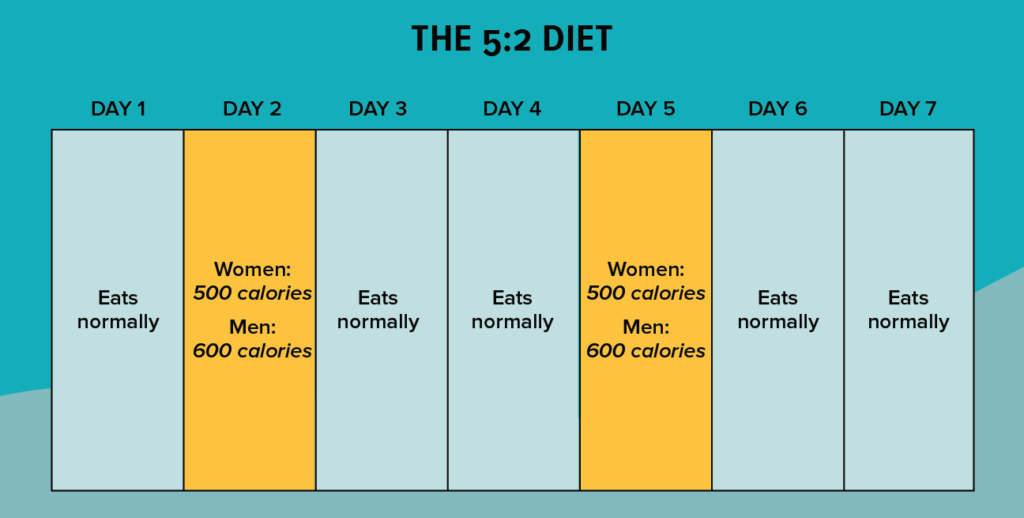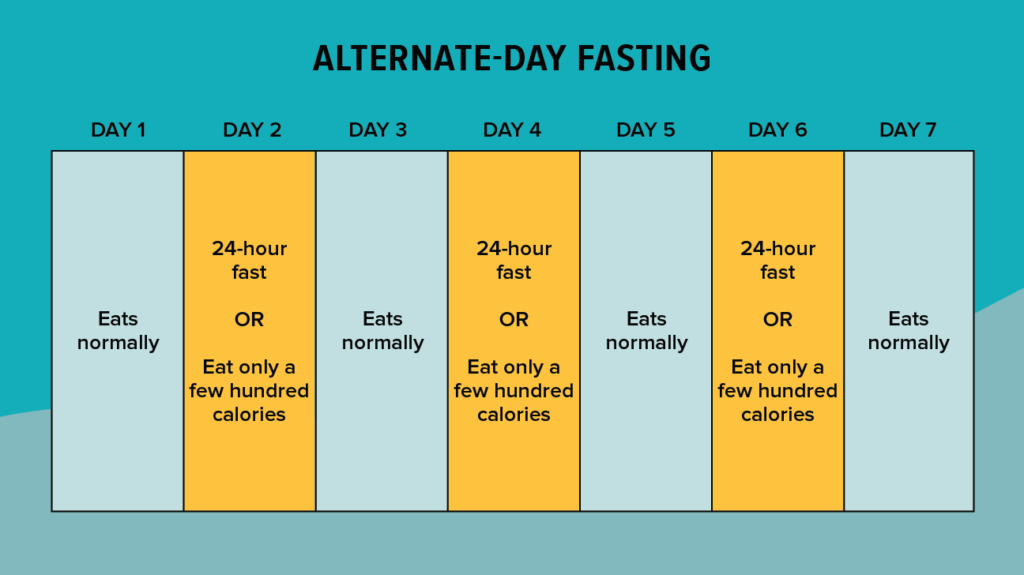4 Different Fasting Protocols And Which Is Best For You
Nutrition • June 20, 2022 • 13min read

The first and most common question about fasting is “how to deal with hunger during my fast?”. And the second two concerns of the beginners are “what are the common fasting protocols?” and “what is the best fasting protocol for me?”. Let us start with the second concern along with learning how to control hunger during fasting.
In this article, we are going to talk about 4 different types of common fasting protocols. Moreover, we will learn about the numerous health benefits that come with fasting.
Read the article and find out how one can soothe the fasting process. Also, learn about different types of fasting approaches and what method may fit you best.
Explaining Fasting Protocol
The prevalent goal behind fasting is to lose weight or activate autophagy. The latter is the natural cleansing of your body from senescent cells to build up newer and healthier cells. Autophagy is believed by scientists to work conjointly with slow aging precepts.
While the body is in a state of voluntary starvation, cells are stressed. And this is when autophagy is activated for reusing the cells and creating material for essential body processes. As concluded, fasting triggers restorative autophagy and cellular housekeeping.
Studies show the health effects of voluntary fasting. Moreover, numerous research on mammals and humans show the impacts of fasting on longevity. The results scientists and dietitians aspired to achieve drove them to execute various fasting protocols.
The fasting protocol is the method or routine you are applying for practicing different types of fasting. Fasting protocols include skipping or restricting food intake between 12-24 hours of the fasting period. Depending on the aim and type of fasting, also your body requirements, and your health conditions, you may choose to follow certain protocols that suit your organism.
First of all, you should learn the steps before diving into the routine of restricted eating. You can start by:
- Skipping snacks during meal intervals.
- Then, it will be easier to skip at least one meal a day.
- And later, you can try fasting 8 hours a day by eating one meal at noon and one until 7 p.m.
Take your time and start with small steps until you feel comfortable practicing fasting for 12-18 hours a day. As suggested in the study published in January 2022, around 18 hours of fasting activates harmless autophagy. The outcome of your slow start will contribute to faster and healthier results, as you will not damage your body by pushing it hard all of a sudden.
There are many different protocols for fasting and that makes the process suitable for almost everyone. Along with triggering autophagy, fasting delivers numerous other benefits which we are going to discuss.

4 Effective Types Of Fasting Protocols
In the era of abundant fridges and fast food delivery services, many people still choose to fast and eat healthy diets. There are 3 different types of fasting – calorie restriction, macronutrient restriction, and seasonal eating.
The most practiced of these 3 is calorie restriction which, simply put, is time-restricted eating. This is also known as intermittent fasting (IF) which has become mainstream over the last few years due to its restorative results.
Intermittent fasting is defined as 12-18 hours of fasting, going with one or no food during the whole day. Most people follow intermittent fasting to shed weight, others aim to provoke autophagy. But there is also a majority of people whose goal is longevity- an effect intermittent fasting is scientifically proven to carry.
The second type of fasting is macronutrient restriction which is common among athletes. Carbohydrates, proteins, and fats are the macronutrients that are rich in food athletes and resistance exercise practitioners consume.
Restricting these nutrients and preserving this type of fast athletes clean up their guts and start the healing process. Macronutrient restriction is practiced 2-3 days a month.
Seasonal eating talks about itself and is not really fasting, but eating according to certain patterns. People living in specific regions, and countries do not always have the supply of all the vegetables and fruits all around the year.
And the logic behind seasonal eating is consuming those fruits and vegetables that are naturally available during a certain season of the year. With seasonal eating, you can be more ensured you eat naturally grown products rich in vitamins.
Out of these 3 types of fasting, intermittent fasting is the most famous and the most practiced one. The reason behind this is numerous clinical studies on mammals and humans demonstrating the benefits of IF on cognitive, metabolic, and cardiovascular health.
Another major benefit connected with Intermittent fasting is its association with longevity. A recent study with fruit flies demonstrated how time-restricted eating prolonged the life of these insects with 13% for males and 18% for females.
Before starting your journey of fasting you may need to learn about the different protocols people practice around the world. These can help you find the method that suits your fasting aims.
It is also important to consider several precautions:
- It is better to skip fasting while pregnancy or before planning to get pregnant
- Women who are breastfeeding
- Children under 18 years
- Exclude endurance or resistance exercises on the days of fasting
- People with diabetes are advised not to follow Intermittent fasting
- Avoid fasting while taking prescription medications
- Refrain from fasting in case of eating disorders or a previous history of eating disorders
So, let us discuss the 4 most popular types of fasting protocols, their benefits, and the cautions you may need to take into account.
16:8 Fasting Protocol
The time-restricted or 16:8 fasting started to gain popularity among people aiming to lose extra weight. Now, this type of time-restricted fasting method is believed to enhance longevity and control blood sugar levels.
During the 16:8 fasting:
- Eat low-calorie and low-fat food during the 8 hours window
- Fast during the next 16 hours
- Fast 14 hours for women and 16 for men
To maximize the benefits and energy intake during your eating hours, you should include as many as possible nutritious products in your meal. Add vegetables, fruits, whole grains, and protein sources (eggs, fish, meat, and legumes) to your healthy plate.
Depending on your sleeping-waking cycle, you can design your own schedule for 16 hours of fasting and 8 hours of eating. One of the widely-practiced timeframes involves eating from 9 a.m. to 5 p.m. and fasting during the rest of the day.
If you prefer skipping your breakfast, you may start your fasting period from noon (12 p.m. midday) till 8 p.m. This way you fast overnight and allow your body to rest from food during the first half of the next day.
Yet, while your body is still digesting the food you may face longer sleep latency or deprived sleep patterns with this timing. In that case, we suggest using the one-hour rule by moving every meal intake an hour earlier.
The benefits of 16:8 or time-restricted fasting protocols include blood sugar regulation, improved insulin sensitivity, and cognitive function. Moreover, during a recent study scientists managed to reveal the effects of IF on longevity.
5:2 Fasting Protocol
One of the advantages of intermittent fasting (IF) is it does not restrict eating any types of foods. Instead, IF narrows the eating window when you can eat whatever you want and what is good for your health.
Most celebrities rely on the 5:2 protocol of fasting to effectively lose weight. This is one of the vastly practiced approaches to intermittent fasting and is one of the most convenient ways to follow and lose weight.
The 5:2 fasting plan means:
- 5 days of eating as per usual,
- 2 days of fasting while consuming food containing 500 calories for women and 600 calories for men,
- It is important to allow at least one day between these 2 fasting days.
For example, people practicing this two-day fasting approach may fast on Mondays and Thursdays and eat normally the other 5 days. This type of fasting plan is suitable for beginners who are not comfortable with not eating during the whole day, but are looking for ways to lose weight and enhance longevity.
As an example, 300 obese and heavy-weight participants took part in a study published in 2021 where the 5:2 fasting protocol and traditional dieting were compared. After a year of followed-up research, the study volunteers showed significant weight loss along with other physiological and mental health effects.
Hence, the researchers from these studies believe that diet professionals may advise a 5:2 fasting plan for their clients. As the participants from the 5:2 fasting group had a better experience than those in the traditional dieting group.

Eat-Stop-Eat Fasting Protocol
The name of the Eat-Stop-Eat fasting approach talks about itself. This is a specific protocol of intermittent fasting when you fast one or two non-successive days in a week.
The inventor of this fasting protocol and author of the title book “Eat-Stop-Eat” is a fasting expert Brad Pilon. He believes that traditional dieting is destined to fail and cause possible health issues. While the Eat-Stop-Eat fasting method does not feel quite like a diet and helps people clear up their body and mind from food during the food-free days. As a positive side effect, people also experience weight loss.
These are the inclusion steps of the Eat-Stop-Eat fasting protocol into your diet:
- During the week, choose 1 or 2 non-consecutive days you will fast
- Eat the rest of the days in the week whatever your body needs and whatever is a healthy choice.
You may feel confused if the days you are fasting include one meal. The fasting day may not start from the very morning of the day but complete the 24 hours from two consecutive days. Let us make this clearer.
For example, if you ate your last meal on Monday at 8 p.m. before you start your fasting, then on Tuesday you must eat your first meal right after your fast is over at 8 p.m. This way you fast exactly 24 hours but ate one meal before and after the start of the fasting window.
During the 24 hours of fasting, you should not consume any type of food, including snacks, and high-calorie beverages. Though staying hydrated is very important for providing your body with oxygen and initiating better digestion. You are free to drink water, flat black coffee, and tea without additives.
Though there is no registered research on the Eat-Stop-Eat fasting protocol, some people report weight loss while restricting the calories on their eating days. During the fasting days, the body enters into a new state of metabolic function known as ketosis. This metabolic shift may contribute to fat utilization and better energy production.

Alternate-Day Fasting Protocol
The Alternate-day fasting method (ADF) is designed by Dr. Krista Varady and is a simplified approach to weight loss through calorie restriction. Dr. Varady believes that restricting calories with food intake every other day makes dieting more pleasant than counting your calories daily.
Here is a guide for beginners of ADF:
- Eat one day and fast the other day
- During the fasting days, you are allowed to drink unsweetened coffee and tea, and of course, water
- During the eating, days design a highly nutritious diet
Yet, some people who follow certain training plans might prefer a modified version of the ADF protocol meaning that they are allowed to eat low-calorie food and use sugar- and fat-free drinks.
According to research 222 participants were involved in a 1-year weight loss study where the effects of ADF and Calorie Restricted (CR) diet were compared. At the end of the research, scientists concluded that ADF is not superior to the CR diet. But if practiced with 500 calories a day alternate-day fasting is easier to adhere to and is a good alternative to CR.
The study also indicated that alternate-day fasting, similar to a calorie-restricted diet, is beneficial for reducing unhealthy belly fat and inflammation. Another study suggests that ADF is effective for heart protection both for overweight and lean individuals.

How To Control Hunger During My Fast?
However, people just starting this time-restricted diet may feel acute hunger during the fasting hours. Your body sends false signals of hunger in the state of low glucose levels. Yet, after several weeks of fasting, you may no longer feel hungry or as if your fasting is not working.
But of course, during the first weeks, you may be tempted to snack or drink energetic drinks, high-caloric and -sugar beverages. By doing this you will immediately break your fast.
Fortunately, people who are experienced in fasting, know several second-to-none tricks on how to get rid of feeling hungry.
- Water is a good killer of hunger. You can add more flavor to your water with lemon, oranges, and mint. As a general practice for people fasting for different reasons, drinking water is a lifesaver. By waking up in the morning you can drink water on an empty stomach.
This will help you not only take the first hours of IF easier but will also fill your body with essential nutrients and oxygen. Drinking water will also contribute the digestion making it easy to turn the food you will eat after the fast into energy.
- Coffee will not break your fast if you follow some drinking instructions. To maintain your fast drink a flat black coffee without additives such as sugar, milk, and honey. Instead, you may add a pinch of Himalayan salt, cinnamon, nutmeg, or cocoa powder to add some pleasant flavor to your coffee.
- Drink tea. But again, any kind of additives like sugar, honey, cow milk, or vegan, plant-based milk will break your fast. You should brew your tea bags or leaves without any mix-ins during your fasting periods, yet you can add these ingredients while the fasting window is closed.
However, with time you will get used to not eating and will gradually stop feeling hungry. And keep in mind that fasting and hunger are considered practical ways to trigger the body’s natural protective mechanisms.
Which fasting protocol is the best for you?
Any type of fasting and skipping meals is good for physical, organismal, and cognitive function. As your brain is not concentrated on digesting the food you consumed, it can concentrate on your daily tasks better, it can function effectively and faster.
If you are a morning person and aim to finish your tasks during the first quarter of the day, skip your breakfast or snacks in the morning. If you are having trouble falling asleep at night, you should think of quitting the last evening dinners, snacks, and coffee. This way you will support better cognitive function.
Aiming to start a healthy lifestyle with intermittent fasting, you may want to consult your doctor in case of health conditions. Also, with different fasting protocols, your body may send you signs prompting you may try another approach that fits you best.
Not depending on why you fast- for losing weight or to promote healthy aging, you can fortify these effects with supplements. And especially NMN supplements which are designed to support your aim of losing weight, gaining more energy, and slowing down biological aging.




